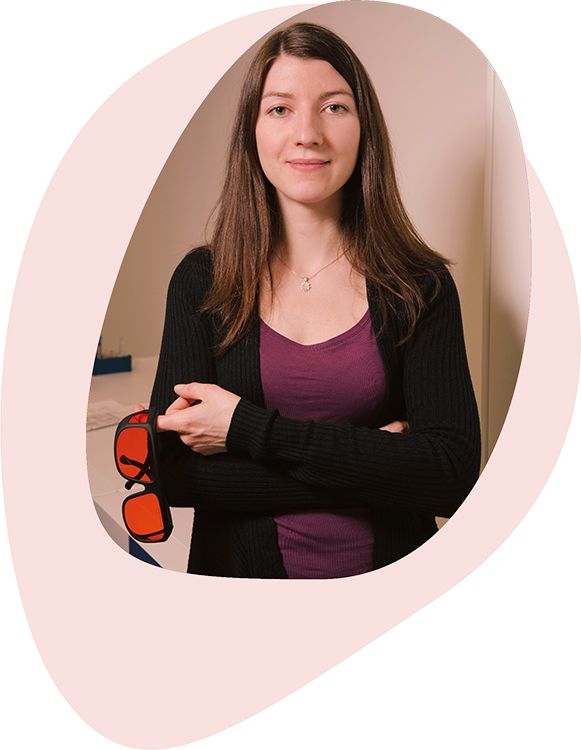

Daniela Täuber
Ex-vivo application of IR-spectroscopic force microscopy to granules of the human retinal epithelium
Leibniz IPHT // Jena, Germany
Q&A Session I // Wednesday, October 28 // 6.15 pm – 7 pm (CET)

Introduction
Cells of the retinal pigment epithelium (RPE) host different intracellular granules (lipofuscin, LF; melanolipofuscin, MLF; melanosomes, M) relevant for clinical imaging and diagnosis. Despite intensive research, the deposition, functionality, and chemical composition is not yet fully understood, especially of LF and MLF. Further knowledge would help to define LF, MLF, and M´s role in the process of physiologic aging and the development of retinal diseases. In particular, changes induced by photo-oxidation are suspected to occur on the surface of the granules.
Method
Mid-infrared Photo-induced Force Microscopy (PiFM) is a recent method combining infrared excitation via powerful quantum cascade lasers with mechanical detection of the induced changes in the electromagnetic near-field using metallic atomic microscopy force (AFM) tips. This results in surface sensitivity and a lateral resolution defined by the AFM, the signal detection is laterally and vertically confined within about 10 nm for acquired IR spectra. So far, the potential of PiFM for nanochemical characterization has mainly been demonstrated on polymer materials. Its high resolution and surface sensitivity promise new insight into the nanochemical surface composition of RPE granules. Human non-fixated retinal cross sections without pathologies were obtained from donor eyes. RPE was imaged across the posterior pole using light microscopy, confocal autofluorescence microscopy, and PiFM.
Results & Discussion
Preliminary results from the investigation of two cross-sections of human retina revealed significant variations in the spectra averaged over a box region obtained from hyperspectral PiFM scans on micrometer-sized RPE granules. Such mean spectra are more similar to conventional IR spectra than single PiFM spectra, as the latter lack the averaging present in IRspectroscopy. The spectral variations between different box locations were observed in particular in the spectral regions associated with carbonyl bands from fatty acids and with amides. This confirms the potential of PiFM to classify RPE granules according to the average chemical composition of their surfaces. Such classification will shed further light on the functionality of RPE granules and their relevance for age-related degeneration, and assist the improvement of disease control and care.
Outlook
A comparison with PiFM spectra from pristine material associated with RPE granules, as for example bis-retinoid N-retinyl-N-retinylidene ethanolamine (A2E) will provide deeper insight into the chemical composition. Moreover, we plan to complement the study by combination with fluorescence microscopy methods available in our lab, e.g. structured illumination microscopy
(SIM), as well as 2D polarization resolved fluorescence imaging (2DPOLIM1,2), which D.T. is
currently implementing in the context of her DFG-project “Live2DPOLIM.”
With augmenting PiFM studies on less complex chemical and biomedical model materials, D.T.
also plans to enhance the general understanding of PiFM signal formation of biomedical systems.
This can ultimately establish PiFM as a method to chemically characterize biomedical structures
at the nanoscale.
1 P. Martinac, A. T. Press, A. Medyukhina, K.-J. Benecke, J. Shi, D. Täuber, S. Hoeppener, Z. Cseresnyes, I. G.
Scheblykin, M. H. Gräler, I. Rubio, M. T. Figge, U. S. Schubert and M. Bauer, Inhibition of phosphoinositide 3-kinase-y
improves liver function in sepsis by preventing RhoA-mediated cholestasis, in Infection, Springer Nature Switzerland,
2019, vol. 47, pp. S6–S7.
2 R. Camacho, D. Täuber, C. Hansen, J. Shi, L. Bousset, R. Melki, J.-Y. Li and I. G. Scheblykin, 2D polarization imaging
as a low-cost fluorescence method to detect α-synuclein aggregation ex vivo in models of Parkinson’s disease, Commun.
Biol., 2018, 1, 157.









